Rear Brake Caliper Replacement JE5, JL9
Caution: Refer to Brake Fluid Irritant Caution in the Preface section.
Caution: Refer to Brake Dust Caution in the Preface section.
Notice: Refer to Brake Fluid Effects on Paint and Electrical Components Notice in the Preface section.
Removal Procedure
- Inspect the fluid level in the brake master cylinder reservoir.
- If the brake fluid level is midway between the maximum-full point and the minimum allowable level, no brake fluid needs to be removed from the reservoir before proceeding.
- If the brake fluid level is higher than midway between the maximum-full point and the minimum allowable level, remove brake fluid to the midway point before proceeding.
- Raise and suitably support the vehicle. Refer to Lifting and Jacking the Vehicle .
- Remove the tire and wheel assembly. Refer to Tire and Wheel Removal and Installation .
- Install a large C-clamp over the body of the brake caliper with the C-clamp ends against the rear of the caliper body and against the outer brake pad.
- Tighten the C-clamp until the caliper piston is compressed into the caliper bore enough to allow the caliper to slide past the brake rotor.
- Remove the C-clamp from the caliper.
- Remove the brake hose to caliper bolt attaching the brake hose to the brake caliper.
- Remove the brake hose from the brake caliper.
- Remove and discard the two copper brake hose gaskets. These gaskets may be stuck to the brake caliper and/or the brake hose end.
- Plug the opening in the brake caliper and the brake hose to prevent fluid loss and contamination.
- Remove the brake caliper pin bolts.
- Remove the brake caliper from the brake caliper bracket.
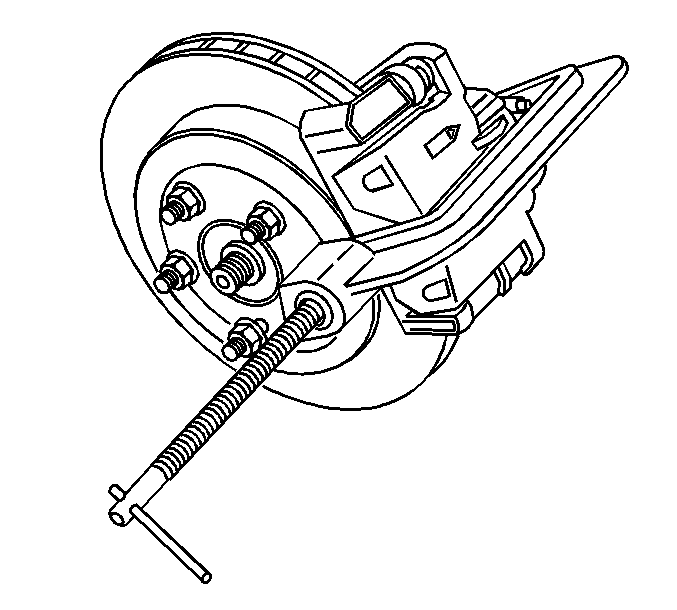
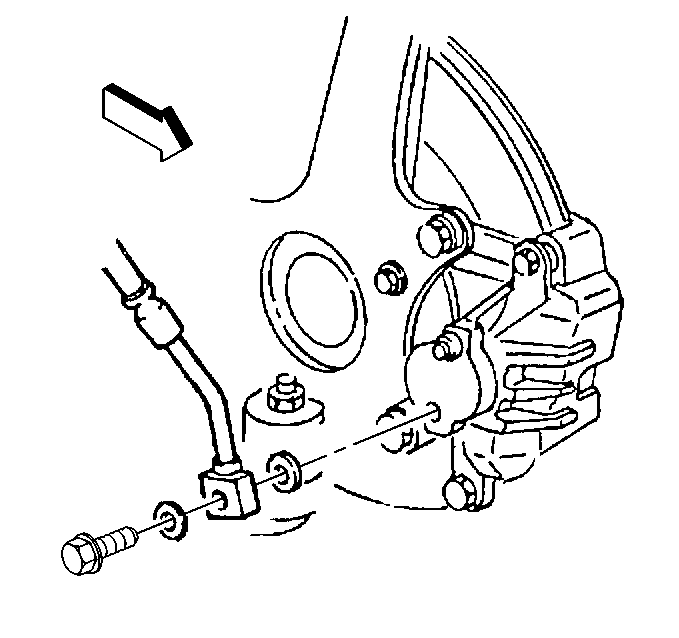
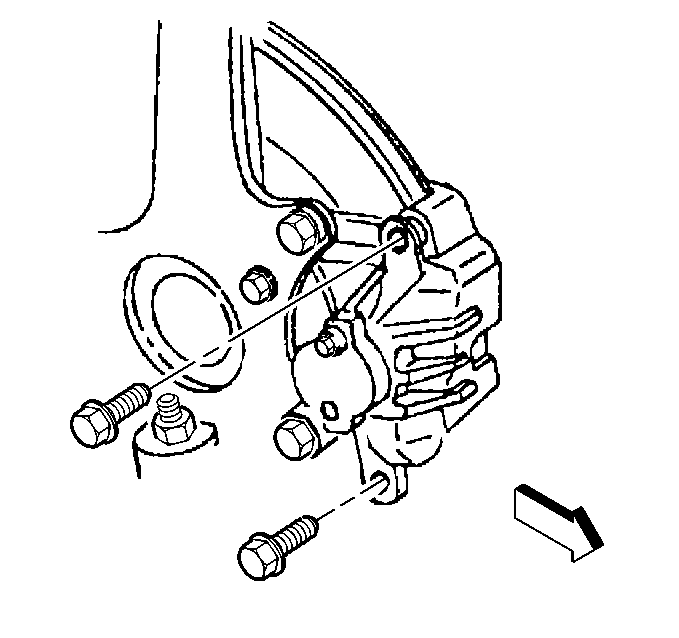
Installation Procedure
- Inspect the caliper slide boots for cuts, tears, or deterioration. If damaged, replace the slides and boots. Refer to Rear Disc Brake Hardware Replacement .
- Install the brake caliper to the brake caliper bracket.
- Prepare the bolts and the threaded holes for assembly:
- Apply threadlocker GM P/N 12345493 (Canadian P/N 10953488), or equivalent to two-thirds of the threaded length of the lower caliper bracket bolts. Ensure that there are no gaps in the threadlocker along the length of the filled area of the bolts.
- Allow the threadlocker to cure approximately ten minutes before installation.
- Apply a thin coat of high temperature silicone brake lubricant to the brake caliper pin bolts.
- Install the brake caliper pin bolts.
- Remove the plug from the brake caliper opening and the brake hose.
- Assemble the NEW copper brake hose gaskets, and the brake caliper bolt to the brake hose.
- Install the brake hose and the brake caliper bolt to the brake caliper.
- Bleed the hydraulic brake system. Refer to Hydraulic Brake System Bleeding .
- With the engine OFF, gradually apply the brake pedal to approximately 2/3 of its travel distance.
- Slowly release the brake pedal.
- Wait 15 seconds, then repeat steps 12 and 13 until a firm brake pedal apply is obtained; this will properly seat the brake caliper pistons and brake pads.
- Install the tire and wheel assembly. Refer to Tire and Wheel Removal and Installation .
- Lower the vehicle.

Important: If reusing the brake caliper pin bolts the threads of the caliper pin bolts and the threads of the caliper bracket mounting holes must be free of residue and debris prior to application of threadlocker in order to ensure proper adhesion and fastener retention.
| • | Thoroughly clean the residue from the bolt threads by using denatured alcohol or equivalent and allow to dry. |
| • | Thoroughly clean the residue from the threaded holes by using denatured alcohol or equivalent and allow to dry. |
Notice: Refer to Fastener Notice in the Preface section.
Tighten
Tighten the brake caliper pin bolts to 60 N·m (44 lb ft).

Important: Install NEW copper brake hose gaskets.
Tighten
Tighten the brake caliper bolt to 50 N·m (37 lb ft).
Rear Brake Caliper Replacement J56
Caution: Refer to Brake Fluid Irritant Caution in the Preface section.
Notice: Refer to Brake Fluid Effects on Paint and Electrical Components Notice in the Preface section.
Removal Procedure
- Inspect the fluid level in the brake master cylinder reservoir.
- If the brake fluid level is midway between the maximum-full point and the minimum allowable level, no brake fluid needs to be removed from the reservoir before proceeding.
- If the brake fluid level is higher than midway between the maximum-full point and the minimum allowable level, remove brake fluid to the midway point before proceeding.
- Raise and support the vehicle. Refer to Lifting and Jacking the Vehicle .
- Remove the tire and wheel assembly. Refer to Tire and Wheel Removal and Installation .
- Carefully insert a plastic flat-bladed trim tool between the rotor and inboard brake pad.
- Carefully apply pressure to the inboard brake pad until both caliper inner pistons are compressed into the caliper piston bores.
- Carefully insert a plastic flat-bladed trim tool between the rotor and outboard brake pad.
- Carefully apply pressure to the outboard brake pad until both caliper outer pistons are compressed into the bores.
- Remove the brake hose to caliper bolt attaching the brake hose to the brake caliper.
- Remove the brake hose from the brake caliper.
- Remove and discard the 2 copper brake hose gaskets. These gaskets may be stuck to the brake caliper and/or the brake hose end.
- Plug the opening in the brake caliper and the brake hose to prevent fluid loss and contamination.
- Remove the brake caliper bolts (1).
- Remove the brake caliper.
Important: Use ONLY a plastic flat-bladed trim tool and/or another suitable soft tool when compressing the caliper pistons into the caliper piston bores. Never use any type of metal tool between the brake rotor and brake pads to compress the caliper pistons into the bores.
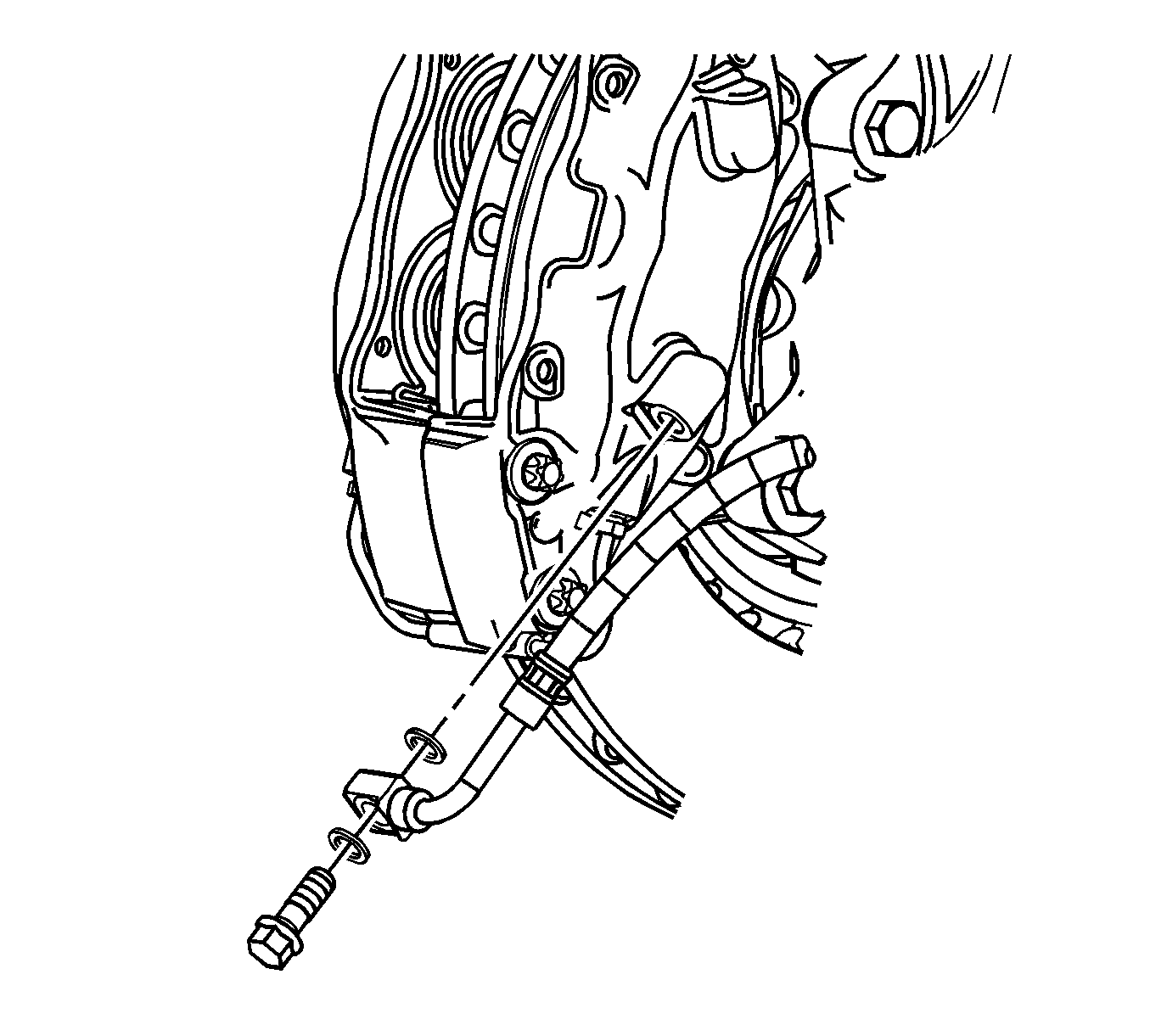
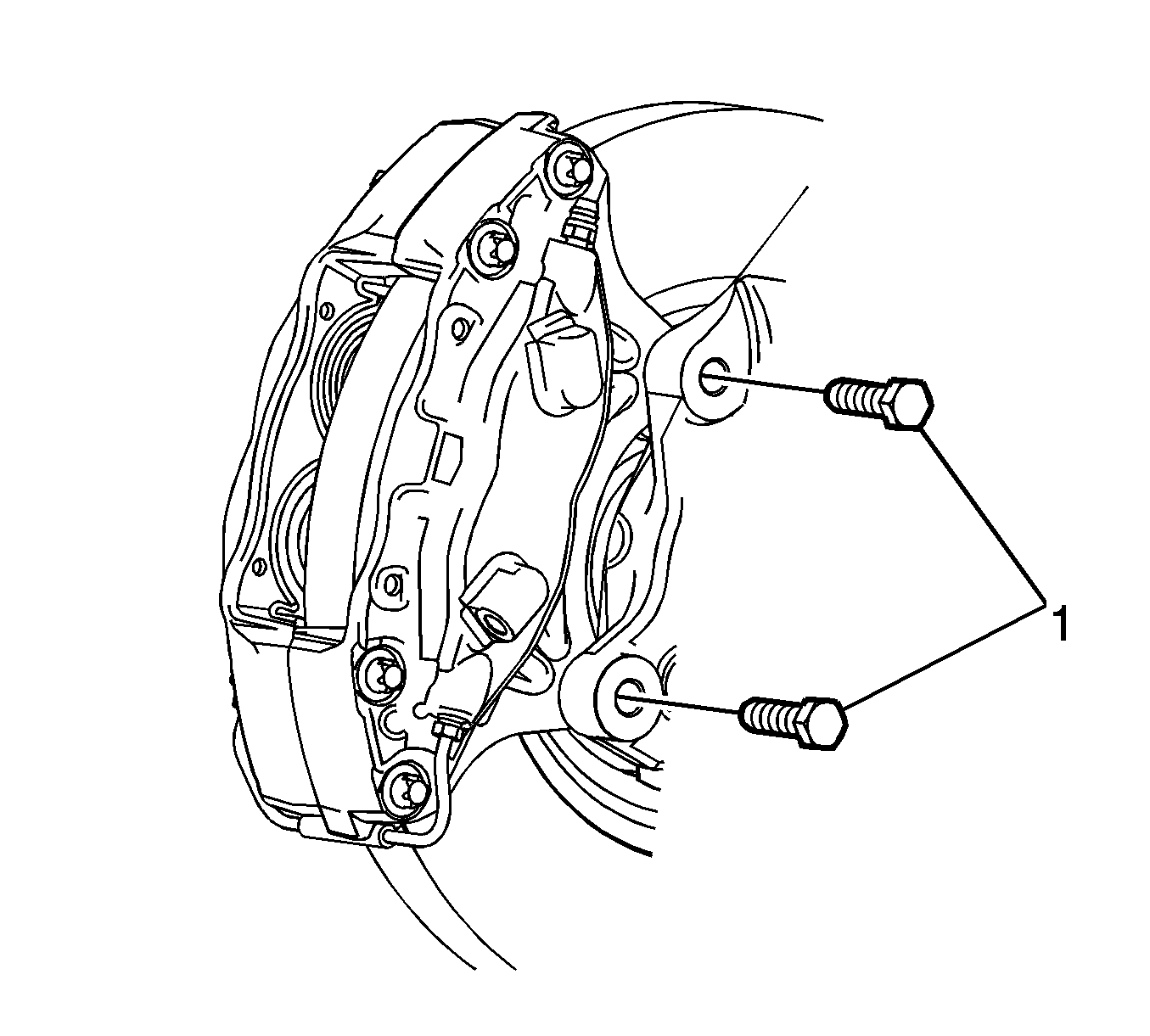
Installation Procedure
- Prepare the bolts and the threaded holes for assembly:
- Apply threadlocker GM P/N 12345493 (Canadian P/N 10953488), or equivalent to two-thirds of the threaded length of the caliper to knuckle mounting bolts. Ensure that there are no gaps in the threadlocker along the length of the filled area of the bolts.
- Allow the threadlocker to cure approximately ten minutes before installation.
- Apply a thin coat of high temperature silicone brake lubricant to the brake caliper pin.
- Install the brake caliper to knuckle mounting bolts (1).
- Remove the plug from the brake caliper opening and the brake hose.
- Assemble the NEW copper brake hose gaskets, and the brake hose fitting bolt to the brake hose.
- Install the brake hose and the brake hose fitting bolt to the brake caliper.
- Bleed the hydraulic brake system. Refer to Hydraulic Brake System Bleeding .
- With the engine OFF, gradually apply the brake pedal to approximately 2/3 of its travel distance.
- Slowly release the brake pedal.
- Wait 15 seconds, then repeat steps 10 and 11 until a firm brake pedal apply is obtained. This will properly seat the brake caliper pistons and brake pads.
- Install the tire and wheel assembly. Refer to Tire and Wheel Removal and Installation .
- Lower the vehicle.

Important: If reusing the brake caliper to knuckle bolts the threads of the caliper bolts and the threads of the knuckle mounting holes must be free of residue and debris prior to application of threadlocker in order to ensure proper adhesion and fastener retention.
| • | Thoroughly clean the residue from the bolt threads by using denatured alcohol or equivalent and allow to dry. |
| • | Thoroughly clean the residue from the threaded holes by using denatured alcohol or equivalent and allow to dry. |
Notice: Refer to Fastener Notice in the Preface section.
Tighten
Tighten the brake caliper to knuckle mounting bolts to 120 N·m (88 lb ft).

Important: Install NEW copper brake hose gaskets.
Tighten
Tighten the bolt to 34 N·m (25 lb ft).
